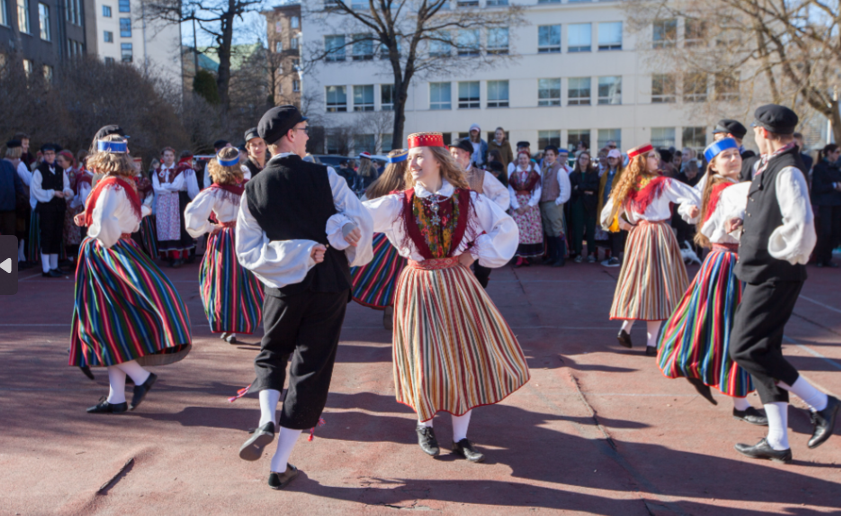More Than Fabric: Symbolism in Estonia’s Fashion

©️ Freepik
Swap your everyday clothes for something special! Estonian folk dress, called Rahvariid, tells your whole story.
Made for daily life, linen and wool ruled, with colors reflecting nature. But fancy stitches mattered! They hinted at a woman’s skill and family history.

Regional Flair: A Patchwork of Estonia Fashion Traditions
Like many cultures, Estonian clothing served as a visual map, what you wore told everyone where you were from. Every region had its own daily styles, so no two town festivals looked the same. This love for local dress is still strong today, with each area showing off its unique outfits with pride.
Social Hierarchy and Fashion Influences
Social class also played a significant role in daily attire. The upper echelons of Estonian society, heavily influenced by neighboring Germany, embraced fashions mirroring European trends. In contrast, the common folk, particularly in rural areas, held onto more traditional styles, often passing down garments through generations.

Exploring regional variations in Rahvariid offers a fascinating glimpse into the diverse cultural tapestry of Estonia. Here are some notable examples:
- Saaremaa, Hiiumaa, and Muhu: Scandinavian influences are most strongly felt on these western islands. Women in Muhu wore unique accordion-pleated skirts, achieved by pressing down hot loaves of bread on the fabric. The Muhu bride’s headdress featured a distinctive high white trapezium-shaped cardboard cap covered with linen and decorated with white-thread embroidery.
- Kihnu: This island, known for its strong maritime traditions, displayed a unique blend of Estonian and Swedish influences. Women here wore the käised blouse typical of north Estonia, while their headdresses varied by locality, with close-fitting embroidered coifs in the south and the pottmüts or kabimüts hats in the north.
- Tartu: This university town, a center of learning and culture, saw a more bourgeois influence on Rahvariid. Wealthier women in Tartu might wear silk blouses and skirts, reflecting a more urban and modern aesthetic.

Fabric and Function of Estonia’s Fashion: Nature’s Bounty Woven into Daily Life
Linen and wool reigned supreme as the fabrics of choice. Linen, a versatile material, offered breathability in the summer and surprising warmth in the winter. It formed the base for dresses, vests, and trousers. When the mercury dipped, wool provided much-needed insulation, ensuring comfort during harsh Estonian winters.
Wool was used for heavier outer garments, allowing people to work and travel efficiently. Daily wear reflected the natural hues of these materials: white, black, and brown, a simple yet practical palette mirroring the surrounding landscapes.

Women’s Ensemble: Functionality Meets Symbolism
A typical woman’s daily attire consisted of a long-sleeved white blouse, a long, flowing skirt, and for married women, a headscarf and apron. The headscarf and apron, often adorned with symbolic embroidery, were traditionally presented to the bride on her wedding day, which signifies her transition into womanhood and the roles that accompanied it.
Men’s Attire: Practicality Reigns Supreme
Men, on the other hand, donned long trousers, either reaching the ankles or stopping at the knee and secured with a pin. These were worn with a long-sleeved shirt and a vest for added warmth. Both men and women, when available, sported long, embroidered wool socks for extra comfort and protection from the elements.
This glimpse into Estonia Fashion and daily dress offers a fascinating window into a bygone era. While modern Estonians have embraced contemporary styles, the spirit of Rahvariid lives on, serving as a reminder of the rich cultural heritage and regional identities that continue to define this captivating nation.
You might also like to read: Top 10 Holiday Tradition Ideas


